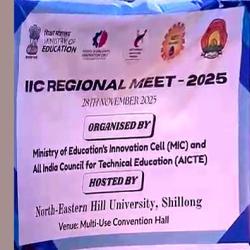Blended learning
While the pandemic was raging, learning in schools and universities had to shift to a distance learning format. Around 1 billion students from all over the world began learning through Zoom, Microsoft Teams and other platforms. In Russia, universities switched to distance learning, then to a hybrid format. Whereas in 2015 only 5% of students were taking courses online, in 2020 there were 49%.
Hybrid learning has become commonplace by 2021. According to the survey conducted by Moscow City University, today 70% of university lectors believe that blended learning will become the norm (before the pandemic, 22% thought so). At the same time, 25% of students are ready to study fully online, and among professors only 37% disapprove of distance learning (up from 47% a year ago).
In the world of education, there are already universities that work entirely in a distance format: for example, Minerva online university, which beat Ivy League universities in a popularity rating. There are no lectures at the university; the main format is the "flipped classroom", where students learn the material on their own and then discuss it with professors and make projects.
Developing digital ecosystems
What does blended learning format look like in Russia when the pandemic has almost receded? Auditorium classes are becoming fewer, online events more numerous. Digital university platforms are developing, which allow the student to listen to online classes, create personal student and teacher accounts, communicate with each other and do joint projects, download timetables and homework, find information in the digital library and add a portfolio. Moreover, it allows students to be assessed using Big Data, considering the totality of their work, and thus exclude the exam format from some subjects.
Today, various leading Russian universities have such platforms: some use standard learning process management platforms, while others develop their own solutions. For example, Moscow City University has created a service for intellectual analysis and prediction of student results, while Kazan Federal University has created a digital system for studying factors of student academic success.
Many universities have also started to create their own course files. MСU has launched a website with open online education courses OK.MGPU, which helps to make the transition to interactive, adaptive digital content.
Education that meets everyone's needs
Another important trend in higher education is the focus on students and their real needs. More and more universities are giving students the opportunity to shape their own curriculum and thus design their own educational path. The student becomes not an object, but a subject of the educational process. He shapes learning as if the student is building a house out of the blocks of subjects he needs, modelling his own programme.
Universal courses are emerging for all students regardless of their field of study: ITMO, for example, has developed a system of university-wide courses in digital competencies and soft skills. Tomsk State University has already set up a special tutoring service to help students build individual educational trajectories.
There is an interesting example from around the world: at Columbia University in New York, students can not only design their own educational programme but also choose how they want to attend classes: in person, via Zoom, or by viewing lecture recordings at their convenience.
The digitalisation of university campuses is happening not only in terms of equipment, but also through the creation of 'smart' public spaces that can easily be adapted into a lecture hall, a seminar or self-study room, or a laboratory. For example, MISiS is developing a project to upgrade libraries into co-working spaces and create multimedia classrooms.
Microlearning
Universities are starting to introduce micro-courses lasting from a few minutes to a few days. Each of them helps to learn a specific skill, to learn how to solve a specific work task. Therefore, formats like mass open online courses (lectures often last 7-12 minutes), TED (it is an informal monologue on a scientific topic, usually lasting up to 18 minutes) are becoming increasingly popular in higher education.
Micro-education does not replace the usual university way of life, but expands its possibilities, provided that students already have basic knowledge in the profession. Leading universities like the Massachusetts Institute of Technology, Columbia University and Volvo, IBM, Adobe companies are turning to micro-education. With the help of such courses, voluminous skills are formed in stages.
MIT was the first who introduced so–called Micromaster's degree program - a series of micro-courses that lead to the formation of a certain skill and can be credited by the university as a part of the course completed on campus.
In Russian universities, micro-education is introduced for individual modules or subjects. Students can watch the video at any time, they are focused and immediately get the result: the answer to the question, the skill, the solved problem.
Augmented reality technologies
Technologies that help students develop practical skills in augmented reality are appearing in the walls of global and Russian universities. For example, University in San Diego uses simulators in its medical training where students see a patient in augmented reality and can diagnose disease symptoms. Sechenov Medical University uses augmented reality to perform surgeries.
Hasson University has developed the AR StageCraft programme for artists and decorators, which allows them to design paintings and sets in university spaces. Westminster University uses the REVRLaw project to study criminal law. Inside the simulation, the student sees a crime scene and conducts criminological research.
At Columbia University, a hybrid environment is being integrated into virtual reality. People from different parts of the world can gather virtually with the help of glasses in one classroom and listen to a lecture.
In Russian universities, VR technologies are used to conduct laboratory experiments, virtually visit theatres and museums, create three-dimensional models and practice various kinds of competencies.
So, the pandemic has accelerated the movement towards digitalisation, which started a long time ago and has been proceeding at a rather quiet pace. The new reality has had a surprisingly good effect on students' educational outcomes: technology is now helping them to build truly relevant and applicable skills for the future workplace. Universities continue to evolve in this direction, and now their main task is to shape a new didactics of education in which traditional and new forms of learning coexist harmoniously and complement each other.
- 80294 reads









Add new comment